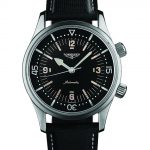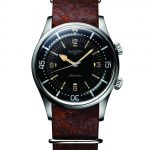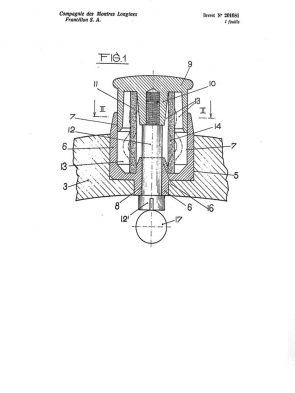
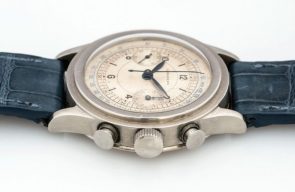
The patent relates to a push-button in which the return spring is replaced by a gasket 'with a cylindrical cross-section made of elastic and impermeable material'. When the button is pressed, the elastic seal is crushed axially and then resumes its shape when the pressure ceases. It then acts as a recall element to return the button-body to its original position.
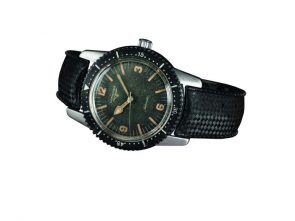
In 1958, the company produced the Nautilus Skin Diver, water-resistant to 120 metres, which featured the patented Compressor technology, with bayonet closure of the case back on an O-ring joint. Already between 1942 and 1943, Longines was a supplier to the "frogmen" of the British Royal Navy, with watches that were waterproof for hours under water, thanks to a screw-down case back and a crown protected by a screw-down cover.
The 1959 Longines Super-Compressor Diver featured a screw-down case back, an evolution of Compressor technology, and was water-resistant to 120 metres. New is the rotating inner flange (bidirectional) in place of the outer bezel, for controlling dive times.
Five years later, the water resistance of the Super-Compressor Diver was increased to an impressive 200 metres, thanks to the oversized screw-down crowns. Double crowns and a rotating flange were used again in a diver made for the Royal Australian Navy in 1971, water-resistant to 300 metres.
The new Legend Diver Watch re-proposes the rotating flange operated by the crown at 4 o'clock, as in the Super-Compressor Diver. Water resistance is up to 300 metres, with screw-locked crowns and back. The automatic movement features a silicon balance spring and an impressive 72-hour power reserve.



